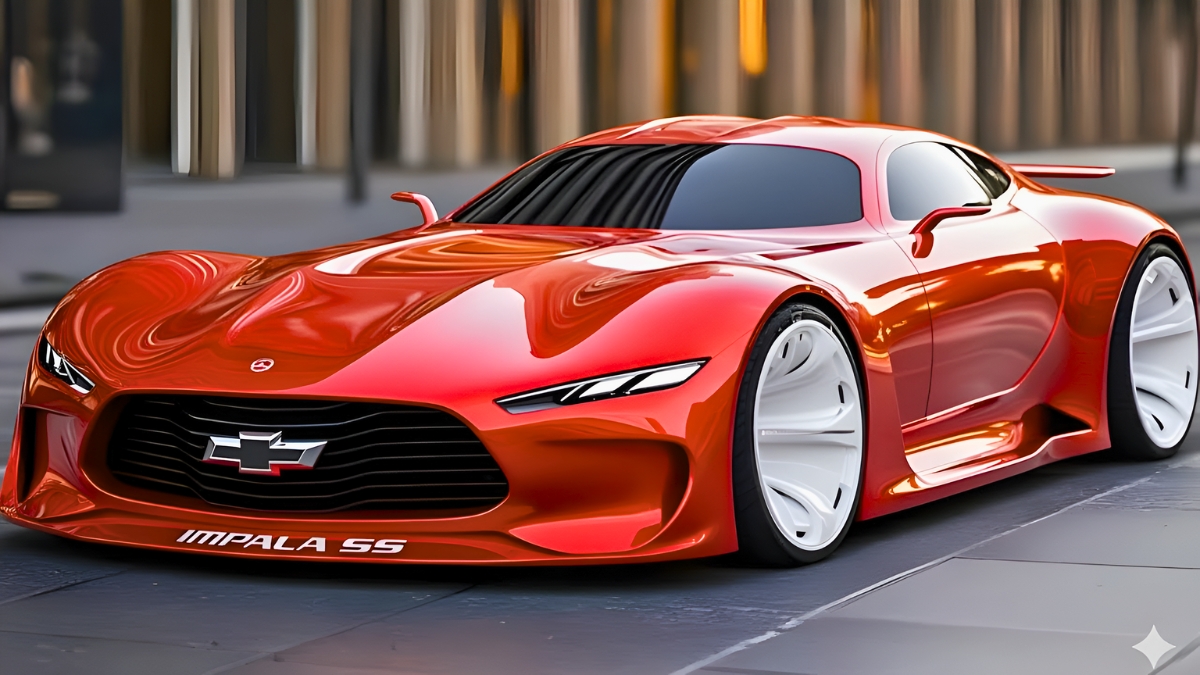When one hears the name Chevrolet Impala SS, it evokes visions of big-block V8 power, sweeping full-size sedan proportions, and a dose of muscle-car attitude hidden beneath a comfortable exterior. While the standard Impala had long been a staple of Chevrolet’s lineup, the SS variant elevated the full-size car into performance territory a blend of luxury, practicality and straight-line speed. This article takes you through how the Impala SS came to be, what made it special in its heyday, and why it still holds a place in automotive lore today.
Roots & Rise: From Impala to SS
The Impala nameplate first arrived in 1958 as Chevrolet’s top-trim full-size offering. Over the years it found success thanks to its styling, value and the broad appeal of full-size American sedans. But by 1961, Chevrolet recognized an opportunity: combine the spaciousness of the Impala with the performance credentials that younger buyers and enthusiasts craved. That gave birth to the Impala SS the “Super Sport” version of the Impala. Wikipedia+1
What made the 1961 Impala SS remarkable is that it wasn’t just a cosmetic package. The factory SS option included upgraded suspension, stronger brakes, heavy-duty components and new engine choices among them a formidable 409 cubic-inch V8 in some cases. autoevolution+2HowStuffWorks+2
What Made It Stand Out
- Performance hardware
In that initial SS package, Chevrolet didn’t mess around. The inclusion of big-block engines like the 409, paired with optional four-speed transmissions and beefier brakes and suspension, meant the Impala SS could genuinely perform not just look sporty. For example, tests showed the 409-equipped variant could run the quarter-mile in just over 14 seconds at nearly 100 mph. autoevolution+1 - Full-size comfort with muscle-car soul
One of the key appeals of the Impala SS was that it didn’t force buyers to sacrifice space and comfort for speed. These cars still carried the full-size body, roomy interiors and sedan practicality. That dual personality meant a buyer could comfortably chauffeur family or friends, then unleash the V8 when the lights changed. Classic Car Wiki+1 - Iconic styling touches
Though the SS badge would later become more of an appearance package, in its early years it meant serious upgrades. The 1962-64 era saw distinctive trim, engine-turned finish on aluminum panels, special SS badging and performance-oriented cues that set the car apart. Wikipedia+1
Evolution Through the 1960s
As the decade rolled on, the Impala SS evolved. By 1964 the Impala itself had been redesigned, adopting a perimeter-frame chassis and sweeping styling. The SS version carried the performance heritage but increasingly shifted toward an appearance/performance blend. autoevolution+1
In the later 1960s, big engines like the 427 cubic-inch V8 found their way into SS-badged Impalas under special options (such as the Z24 package). These cars are rarer and highly sought after by collectors. en.wheelz.me+1
The Revival: 1990s Impala SS
After a hiatus, the Impala SS returned in the mid-1990s. The 1994-1996 models revived the SS name with a potent 5.7-litre LT1 V8, sport-tuned suspension, unique wheels and styling cues that differentiated them from standard Impalas. While full-size in name, they were performance sedans in spirit. Hagerty+1
These were not lightweights by any means, but they offered a surprising amount of performance for a big sedan of that era. The revival cemented the SS badge’s legacy in Chevrolet’s history.
Why the Impala SS Still Matters
The Impala SS resonates for several reasons:
- It bridged the gap between full-size comfort and muscle-car excitement.
- It carried high-performance credentials in an era when many full-size cars were becoming more about comfort and less about speed.
- It left a cultural imprint thanks to its powertrain, appearance and the fact that it often served as a backdrop in low-rider culture and pop culture references. MotorTrend
- For collectors and enthusiasts today, the early SS models (especially those with big-block V8s) represent a unique combination of size, speed and style.
What to Consider (For Enthusiasts & Buyers)
If you’re looking at an Impala SS whether as a restoration project or a collector piece there are a few things to keep in mind:
- Verify the SS package details: early years included true performance upgrades; later years sometimes simply dressed up standard Impalas.
- Engine and drivetrain authenticity matter: the big-block V8s are rare and desirable, but also more complex to maintain.
- Condition of chassis, bodywork and mechanical systems can vary widely full-size cars like this are heavy and many have seen hard use.
- Parts availability, while better for common years, can become tricky for rare options or performance components.
- Understand that even though it wears the SS badge, the driving feel will be different from a compact muscle car expect substantial size and weight.
Final Thoughts
The Impala SS wasn’t just a deluxe family sedan it was a bold statement that performance could exist even in full-sized form. It brought American V8 muscle into everyday usability and comfort, and in doing so created a legacy that lives on today. Whether you’re drawn to the 1960s torque monsters or the surprising 1990s revival, the Impala SS stands as a reminder of when “Super Sport” meant more than just a badge.
Disclaimer
This article is for informational and educational purposes only. The content reflects historical and enthusiast-oriented context and should not be taken as professional advice (legal, financial, or mechanical). Always consult with certified experts or professionals before making decisions regarding vehicle purchase, restoration, maintenance or valuation.



